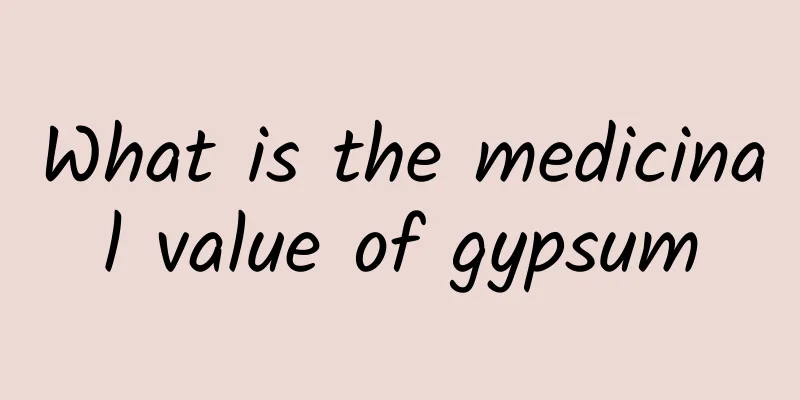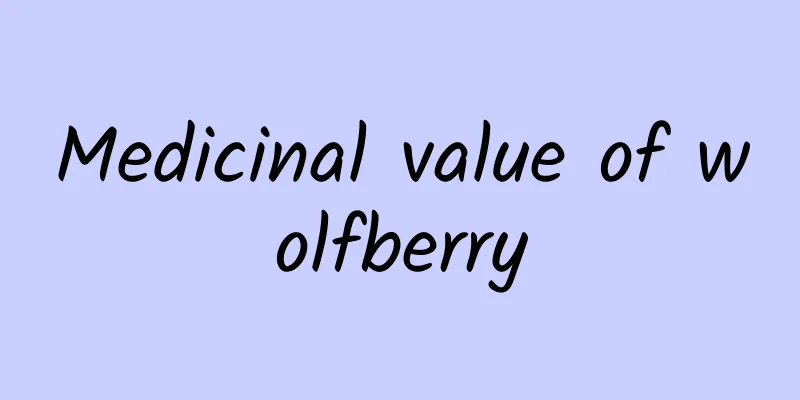What are the effects and functions of the traditional Chinese medicine Stephania tetrandra?

|
Stephania tetrandra is a traditional Chinese medicinal material in our country. It is usually harvested in autumn. After being washed and the outer skin removed, it can be used as medicine after being dried in the sun. However, for those who are not very familiar with Chinese medicine, they still don’t know much about Stephania tetrandra, and even don’t know when to use this Chinese medicinal material. So, what are the effects and functions of the traditional Chinese medicine Fangji? Medicinal Part The roots of a plant. Flavor It tastes spicy and bitter and is cold in nature. Meridians It enters the bladder and lung meridians. Efficacy Dispel wind and relieve pain, promote diuresis and reduce swelling. Indications Used for rheumatic pain, edema, athlete's foot, urinary difficulty, eczema and sores. Related Combinations 1. Used to treat rheumatic arthralgia. This product is pungent and dispersing, bitter and cold, and can dispel wind, dampness and relieve pain, as well as clear away heat. It is a particularly important medicine for rheumatic arthritis with excessive dampness and heat, soreness and heaviness of limbs, redness, swelling and pain in joints, and body pain due to dampness and heat. It is often used in combination with talcum powder, coix seed, silkworm feces, gardenia, etc., such as Xuanbi Decoction. (Treatise on Febrile Diseases) 2. Used to treat wind-cold-dampness arthralgia, spasm of limbs: used together with ephedra, cinnamon, poria, etc., such as Fangji Drink. (The Record of the Holy Spirit) 3. Used to treat edema, ascites, difficulty urinating, and athlete's foot: This product is bitter and cold, can clear away heat and promote diuresis, is good at moving downward and relieving dampness and heat in the lower abdomen and bladder, and is especially suitable for patients with edema of the lower limbs and difficulty urinating. It is often used in combination with Astragalus, Atractylodes, Licorice, etc., and is used for patients with wind-water syndrome, floating pulse, heaviness of the body, sweating and aversion to wind, such as Fangji Huangqi Decoction. (Golden Chamber Synopsis). 4. Used to treat swelling all over the body and oliguria: used together with Poria cocos, Astragalus membranaceus, cinnamon twig, etc., such as Fangji Fuling Decoction. ("Golden Chamber Essentials") 5. Used to treat abdominal distension and edema due to damp-heat: used together with Zanthoxylum bungeanum, Trichosanthes kirilowii and Rhubarb to form Jijiaolihuang Pills. ("Golden Chamber Essentials") 6. Used to treat athlete's foot, shin swelling, pain, heaviness and numbness: used together with Evodia rutaecarpa, Areca nut, papaya, etc. Essentials of Materia Medica Dosage Decoction, 5-10g. Taboo This product is very bitter and cold, so it should not be used in large quantities to avoid damaging the stomach qi. It is not recommended for patients with poor appetite and yin deficiency without dampness and heat. Preparation method Remove impurities, soak briefly, wash, moisten thoroughly, cut into thick slices, and dry. Physiological characteristics Stephania is a perennial deciduous twining vine. Root cylindrical. The stem is slender with slightly twisted longitudinal stripes. Leaves are alternate, broadly triangular-ovate, 3.5-6.5 cm long, 5-7 cm wide, obtuse at apex with a small tip, truncated or slightly cordate at base, entire, green above, gray-green to pinkish white beneath, pubescent on both sides, with 5 palmate veins; petiole peltate, 5-6 cm long. The flowers are small, unisexual, and monoecious; the male inflorescence is a capitate cyme arranged in a raceme, with 4 sepals, 4 yellow-green petals, 4 stamens, and filaments fused into a column, which is disc-shaped at the top and has anthers borne on it; the female flowers are organized into shortened cymes, with the same sepals and petals as the male flowers, 1 carpel, and a 3-lobed style. The drupe is spherical and red when ripe. The flowering period is from May to June, and the fruiting period is from July to September. |
<<: What are the beauty effects and functions of Bletilla striata?
>>: What are the effects and functions of the traditional Chinese medicine Tribulus terrestris?
Recommend
The hottest June since 1961 has just passed! Fierce high temperatures are coming across the country again
It’s too hot! You’ve witnessed history this June ...
The efficacy and function of hunchback sole
Traditional Chinese medicine requires the use of ...
The efficacy and function of spider fruit stems and leaves
Recently, major TV channels have launched various...
What are the effects and functions of Acorus calamus?
Acorus calamus can be used to treat children'...
Is it good to drink angelica soup regularly?
Angelica sinensis is a traditional Chinese medici...
Schisandra chinensis has miraculous effects in treating liver diseases
The incidence of liver disease is getting higher ...
Its efficacy and function
Traditional Chinese medicine has always been the ...
Are carriages 8 and 9 of the high-speed train not connected?
"Anyone who has taken the high-speed rail kn...
What is the effect of Angelica dahurica
What is the use of Angelica dahurica? Many people...
If metal iron is polished to be very smooth, can it be used as a mirror?
Mirrors are common items in our lives. Traditiona...
World Mosquito Day丨Do mosquitoes also have to "take turns"? Let's take a look at the mosquito work schedule
Produced by: Science Popularization China Author:...
The efficacy and function of ground peanuts
Traditional Chinese medicine is very helpful in t...
How to keep the oil flowing? Build a "highway" for the oil to flow!
"Shale is very dense, and oil cannot be extr...
What are the medicinal values of frozen green
In real life, many people know about Dongqing. Do...









